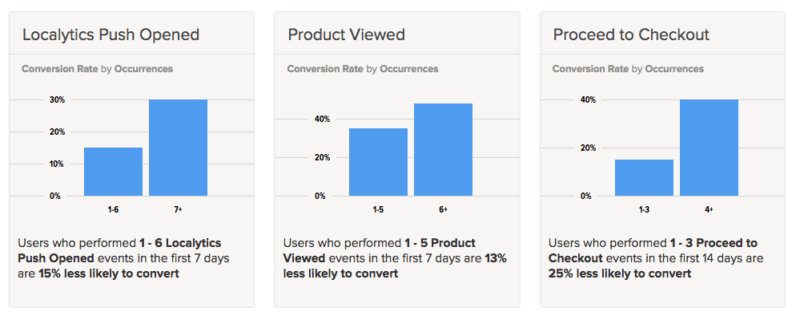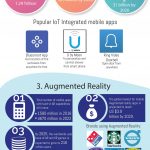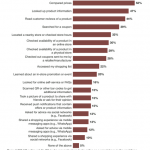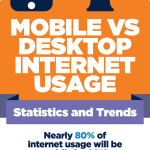5 ways martech can help you reduce mobile app user churn
Acquiring new app users is great, but columnist Josh Todd argues it’s much more cost-effective to focus on retaining existing users. Here he shares how to use predictive analytics and other tools to keep mobile users engaged.

I’ve written a lot about thinking beyond the download and instead focusing on mobile app engagement. I’m a big believer in finding ways to better connect with users you already have, rather than over-investing your marketing dollars in finding new fans, when we know that far too many of those users churn.
As we near the end of 2016, I’d like to piece together all of those disparate ideas about engagement and highlight some of the top tactics I’ve seen brands use to keep users engaged and happy.
1. Keep an eye on uninstalls
We’ll start out with some tough love. No matter what you do, there will always be a percentage of your users who will give up on your app. No matter how amazing the experience is and how much they love it, eventually something may come up that leads them to uninstall.
Typically, it comes down to a few key things: poor user experience, bugs, irrelevant and unnecessary messaging (remember, 50 percent of app users find push messages annoying), seasonality or a new version.
Sure, it hurts when they leave, but the key to this experience is learning how to improve on your app for next time, and mining data and behavior patterns from those who do churn will help you improve the experience for the rest of them. What’s great is that uninstalls are no longer in a black box — you can now actually track them.
Tip: Since you can track uninstalls, and you are focused on engaged users, make sure you are working with a mobile engagement provider that aligns pricing with monthly active users, so you are only charged for users you can actually engage with.
2. Go beyond personalizing and start ‘individualizing’
If you asked them, most psychologists would probably agree that people are inherently selfish (or at least self-interested). Unsurprisingly, people love when you know details about their background — not just their name, which is personalization, but where they are from, what they like and how they engage with your app. Bringing all of those factors together is what I like to call “individualizing”’ the experience.
Shifting your app strategy to fall in line with that psychology is relatively easy. Use the data you collect on your users — whether it’s their location, name or previous purchases — to subtly individualize each touch you have with that user. You can do this through push messages, email marketing and in-app notifications. The same goes for creating content within your apps.
Netflix in particular is amazing at doing this — they collect user data and suggest shows they know you’ll like, keeping you coming back for more (OK, maybe with the exception of when Westworld is on).
Tip: “Hi Josh” is light personalization. Go further and combine profile data with behavioral data to improve engagement and drive loyalty.
3. Predict the future
Easier said than done, right? Surprisingly, for mobile marketers, anticipating a user’s next move isn’t as hard as it seems. By looking into their past actions, we can pretty accurately predict what they’ll do next — whether it’s make a purchase or uninstall the app.
Our own data below shows how granular you can get with this information and how you can use it to your advantage. From there, you’re armed with the information you need to drive more of the kind of behavior you know will make users stick around.

Tip: Predictive capabilities are within your reach, and they are improving every day. The really cool part is getting to the next level, where you segment users with like behavior and use that info to predict what a new user will do when they first engage with your app.
4. Focus on the right stuff
As marketers, our days are awash with different metrics. Metrics from sales, metrics from content marketing, metrics from mobile — we live and die by it.
Don’t get me wrong, measurement is king — it’s what we’re all about, of course. However, it’s important that you don’t use a scattershot approach.
Every app is invariably different, and audiences are unique. You should be consistently checking and testing your apps to make sure you’re giving people what they want. More importantly, you need to see past the basic metrics (like clicks) that can be misleading. For example, if you send a push message, some users might click through, and others might close the message and open the app anyway — the same result, but the metrics will inevitably be skewed.
Instead, you should focus on metrics — like engagement, revenue and conversions — that are more closely in line with your business goals. By focusing on these, you can improve engagement rates while simultaneously avoiding unnecessary marketing spend.
Tip: It’s all about avoiding unintended consequences. Beware of campaign metrics that can give you a false positive on conversion while not capturing app abandonment. Play the long game, and make sure you have the full picture of how your efforts impact lifetime value.
5. Take your marketing to the next level
If you’re a mobile marketer, it’s likely you are already taking advantage of push and in-app messages. However, there’s a lot you can do beyond that to keep users hooked on your app. Notably, geofencing and rich push provide effective ways to keep them coming back.
- Geofencing: Leveraging geofencing in your campaigns gives you the option to reach out to users when they are at a physical location — whether it’s a retail store, a sports arena, a major event or anything else. By knowing when they enter into that zone, you can message them when your brand or product is top of mind, improving conversion rates and engagement.
- Rich push: Rich push is a brand-new tool for many marketers, and it’s one I’m excited about. iOS 10 and the latest Android devices can now show rich media (like GIFs, photos and other media content) within push notifications. This creates an entirely new level of engagement for users, giving mobile marketers a powerful way to drive them back into the app.
Inevitably, some of your users are going to leave, no matter what. The good news is that today, more than ever, we’ve got some pretty powerful tools at our disposal. If you’re putting all of them in your arsenal and being strategic about how you use them, your chances of keeping users coming back is higher than ever.
Some opinions expressed in this article may be those of a guest author and not necessarily Marketing Land. Staff authors are listed here.
Marketing Land – Internet Marketing News, Strategies & Tips
(7)













